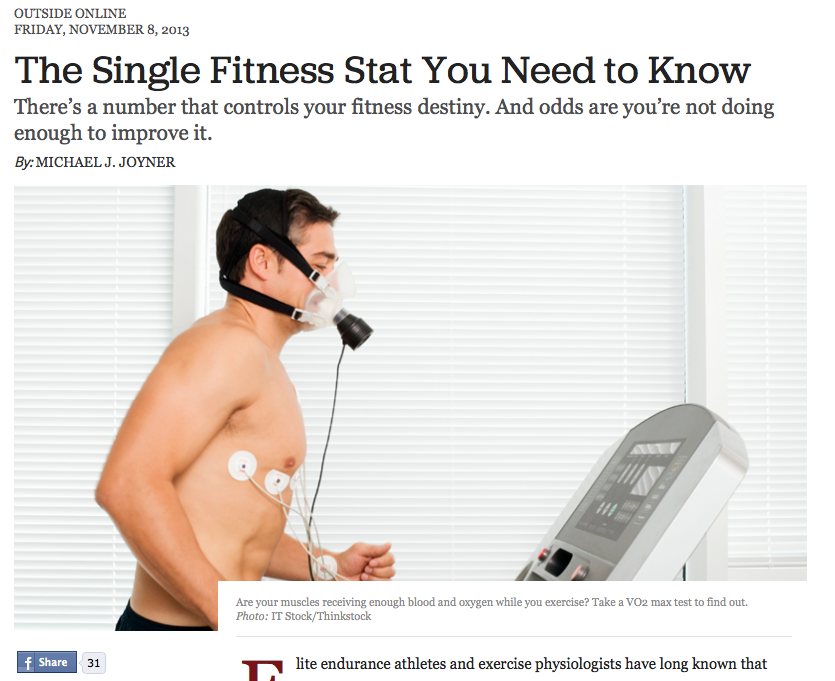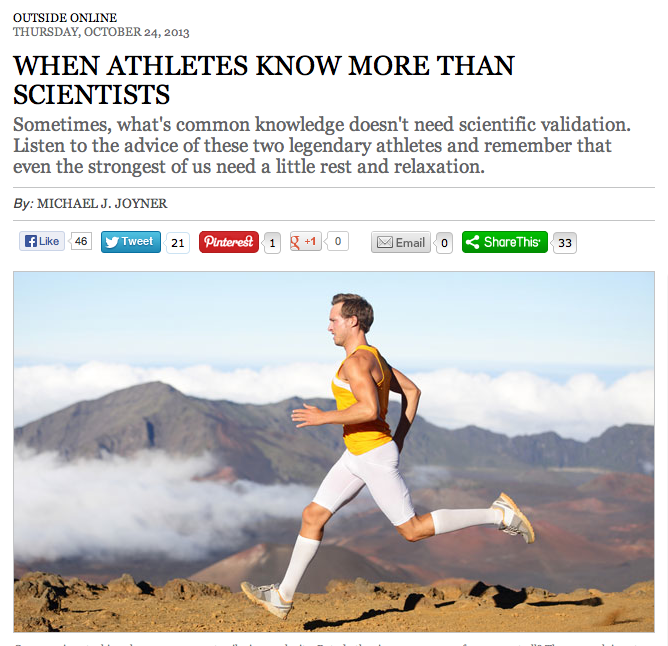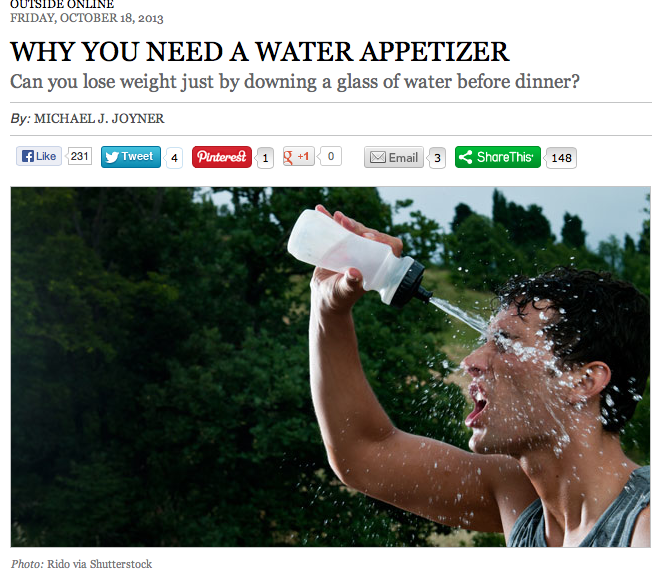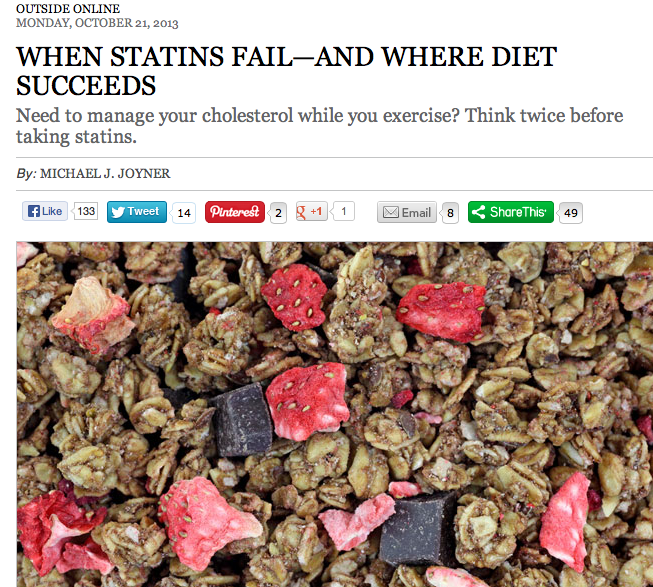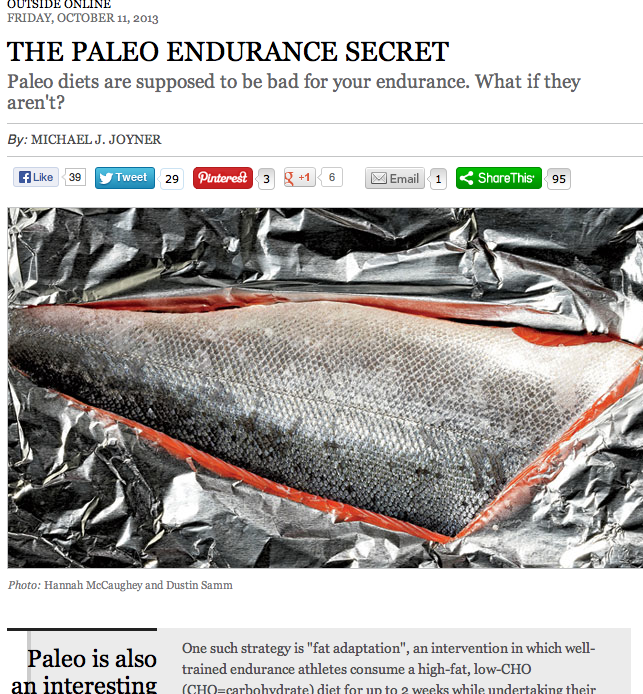Archive for the ‘Current Events’ Category
Statins, 23andMe, and Personalized Medicine
What opinion leaders in biomedical research were thinking 20 or 30 years ago seems pretty remote from the news last month that the American College of Cardiology and American Heart Association released new guidelines on statin therapy to reduce the risk of cardiovascular disease. It also seems pretty remote from the more recent news that the FDA told the genetic screening company 23andME to suspend their direct to consumer health related genetics testing and advice. At first glance these two stories are unrelated, but bear with me while I make the case that both stories are fundamentally about the limitations of something called personalized medicine and the routine use of genetic testing to customize therapy for individual patients.
Statin Guidelines
The net effect of the guidelines is to recommend that far more apparently healthy people be treated with statins to prevent cardiovascular disease. The new guidelines have been controversial from the start and criticized for reasons including: 1) what data and studies were used to develop the guidelines, 2) the accuracy of the calculator used to estimate who is at what risk and in need of treatment, and 3) the deemphasizing of cholesterol monitoring to adjust therapy. There was also yapping about links between some of the guideline writers with the pharmaceutical industry and just the confusion associated with changing recommendations on how commonly used drugs should be used. What most people fail to realize when they read about the next best medical thing is that medical evidence and recommendations shift and change over time. In a recent review of how medical evidence changes more than a third of what is considered state of the art underwent significant challenge or revision over 10 years. So the fact that the new statin guidelines are controversial and why they are controversial is not surprising.
Direct to Consumer Genetics Testing
23andMe was essentially banned from offering to direct consumer information about disease risk based on genetic testing. The main concerns outlined by the FDA relate to the basic validity and reliability of the testing, how assessments of risk were being communicated to the consumer, and the unpredictable nature of how a consumer might respond to a “positive” test. For common non-communicable diseases (the stuff the kills most of us like diabetes, cardiovascular disease, obesity, and many forms of cancer) there are hundreds of gene variants that put people at increased risk. However the increased risk for each variant is typically tiny and pales in comparison to behavioral risks much of the population engages in. In reality no one really has a good handle on the real risk associated with most gene variants and there is much less insight into how they should influence medical decision making. The other dirty little secret here is that it has been difficult to replicate risk variants across studies, and for a number of diseases the gene variant profiles are the same in people with and without the clinical disease. There are also the predictable issues of what findings in one ethnic group might mean in a different group.
Not so Fast: The Statin 23andME Link
Sometime in the 1980s or early 90s the idea took hold that if we simply knew enough about the individual genetic profile of each person that we would be able to customize drug therapy in specific and medical therapy in general to better treat, predict, and prevent a wide variety of disease. Most prominent academic medical centers now have huge programs based on this basic proposition. The FDA’s message to 23andME can be viewed as a “not so fast” message. Whoever is doing the testing, there is a lot left to learn before personalized medicine might really make a difference for most people seeking advice from most Drs. for most of what ails us.
In this context, the statin guidelines say the same thing the FDA did by what they don’t recommend. Instead of recommending that statin therapy be tailored based on each patients genetic profile and cholesterol level, they advocate use of a generic risk calculator derived from decades old epidemiology studies and then largely abandon the idea that it is important to follow how the drugs affect cholesterol levels. Maybe the next step is simply putting statins in the water.
As far as personalized medicine in general goes, research might ultimately get us to a genetically based diagnostic and therapeutic promised land. However, don’t be surprised if personalized medicine based on your individual genetic profiles ends up becoming the biomedical version of atomic fusion, an attractive idea that just can’t quite get there for most diseases.
A Deep Dive & Risk
Last weekend there was a “60 Minutes” segment on the emerging sport of free diving. That plus the death of free diver Nicholas Mevoli got me thinking about risk and extreme sports. When things like this happen sometimes I get calls from the press and almost always my physician colleagues want to know “why anyone would try these things?” Here are the ideas I cover in response to that question.
The Power of a Subculture
People who attempt to set extreme records or push themselves to the limit are usually part of an extreme and somewhat closed subculture. Their friends and peer group share an intense interest in an activity and it becomes literally what they eat, breath and dream about. A question like “how are you today?” from a casual friend or co-worker is frequently answered with something like “pretty good, I did a hard 15 mile run first thing this morning, we will see how the 10 miler this afternoon goes.” This might be seen as an odd response in the real world, but totally normal in an extreme athletic subculture.
That sort of dialogue is an example from running but similar discussions can be had with those who are really committed to just about anything. If you have never been part of an extreme athletic subculture three books that describe them in detail are “Muscle”, “Once a Runner”, and the recent the “Secret Race” by Tour de France rider Tyler Hamilton. So, there is plenty of social reinforcement to “go for it” from the subcultures that people who are committed live in.
My Neurotransmitters Made Me Do It
One of the hallmarks of traditional addiction is the need to use ever more external stimulus to get the same satisfaction from whatever you are addicted too. Traditional addiction to drugs rewires brain circuitry and neurochemistry to make this happen and there is evidence that gambling can do the same thing to susceptible individuals. For many a peak and intense athletic experience is sometimes followed by a letdown as the excitement associated with the planning, training, and anticipation of the big event vanish afterward. The obvious solution to this problem is to find an incremental challenge and start the whole process again. Parallels with gambling seem appropriate here and when you mix what is happening in the brain with the right subculture it is pretty easy to see how the need to do ever more extreme things happens.
The Environment
A lot of disasters and deaths occur in extreme environments. Think altitude, diving, hot and cold. There are tremendous physiological adaptations that can be activated both acutely and in response to training that help us do more or go longer in extreme environments, but when things fail they can fail catastrophically. There is a quote about bankruptcy from the “Sun Also Rises” by Earnest Hemingway that applies to physiological responses to extreme challenges:
“How did you go bankrupt? Two ways. Gradually, then suddenly.”
A classic example of this is watching soldiers faint while at attention on a hot day or seeing a patient respond to potentially life threatening blood loss. If you were to measure the vital signs they would be pretty normal until just before loss of consciousness when there is a sudden drop in blood pressure. When this happens many of the physiological systems that are compensating for the challenges of not enough blood returning to the heart fail essentially at the same time. You can tell a similar story about catastrophic physiological failure in response to other severe stresses as well. So, people feel OK until they don’t and in extreme environments the distance between OK and death is not that far.
You Are On Your Own
Of the people injured in the Boston Marathon bombing essentially everyone who made it to the hospital alive survived. This is one of the main lessons from military combat casualty care for civilian medicine. Extreme sports take place in extreme environments distant from the types of comprehensive medical care that make an incredible array of injuries and illnesses survivable especially in young otherwise healthy patients. Other things that come to mind are the availability (or lack thereof) of specific equipment and logistical support needed to do challenging things in a safer way. Getting a lot of hardware and a support crew to a remote location is challenging and sometimes there might be a temptation to try to do more with less.
Risk Amplifies
Extreme environments, the limits of physiology, and logistical issues are all risks but they are all amplified by poor judgment. I like to tell people that taking four 3% risks at the same time doesn’t mean you have a 12% risk of failure. Instead the risk is more like 3x3x3x3 or 81%. This is a theoretical example but things really do seem to multiply while doing extreme things in extreme environments. Time and time again you hear about people choosing to push it just a bit more prior to a disaster.
I Am All For It
Based on the observations above you might think I oppose people taking on extreme challenges in fact I am all for it. Back in 2011 when Diana Niad was attempting to swim from Cuba to Florida I commented to PBS that questions about “why” do it
“miss the point, at some level, you’ve got to admire anybody who wants to test the limits of human potential in general, and her own limits, in specific…It’s a good thing we’re not all average.”
That having been said, I just want people to understand what they are getting into and avoid getting sucked up by their subculture and neurochemistry into challenges they are not prepared for in truly unforgiving environments.
Who’s Doping Now?
For most of us when I say doping you say Lance Armstrong, or Barry Bonds, or Roger Clemmons or Marion Jones. However, what about the rest of the world and our individual and collective drive for improved performance? Here are a few thoughts on the topic and questions for all of us.
Doping With Tylenol?
A number of recent studies show that acetaminophen (Tylenol) can improve cycling performance. This includes repeated sprints, exercise in the heat, and a self-paced time trial:
“Using acetaminophen, participants cycled at a higher mean power output, with an increased heart rate and blood lactate, but without changes in perceived pain or exertion. Consequently, completion time was significantly faster. These findings support the notion that exercise is regulated by pain perception, and increased pain tolerance can improve exercise capacity.”
Is this doping? Should Tylenol be banned? You can tell a similar story and ask the same questions about caffeine.
What About Middle Age?
A recent piece in the Velo News tells the story of a late 50s recreational cyclist with clinical testosterone deficiency who went on testosterone replacement therapy for a number of issues including osteoporosis. The athlete in question self-reported and asked for a therapeutic exemption so he could keep competing in local races. The exemption denied because he did not have a clearly defined endocrine problem. You can also make the case that Viagra like drugs might improve performance in some people especially at altitude. What does this mean for master athletes who take these compounds for other reasons?
For women there is at least some evidence that hormone replacement therapy (HRT) improves exercise capacity but the data are far from clear cut. What about the aging news anchor who uses botox to keep her job?
Is any of this doping when the drugs in question are used for legitimate medical purposes? Search the internet for anti-aging clinics and you will find all sorts of outfits offering unproven (usually hormonal) therapies purported to slow the aging process. Recently, some elite younger athletes have been tweaking their thyroids levels. Where does the “legitimate medical purposes” justification end and doping or snake oil sales begin?
Academic Doping?
For the twenty somethings reading this article the idea of academic doping – using ADHD drugs obtained on the black market to do better on a test is old news. This practice appears to be pervasive on college and even high school campuses. It also appears to be drifting into the rest of the world where decision making and concentration are critical.
There are all sorts of drugs that enhance or might enhance cognition and more are in the pipeline. Who gets them and when is it fair to use them? Is this just another potential edge for the children of the well-off? In a world of high stakes testing for admission to an elite school or academic program should these substances be banned and test takers subject to doping control? The discussion in the cognitive enhancement world mirrors in many ways the sports doping discussion:
“Drugs developed to treat cognitive impairments are proving popular with healthy college students seeking to boost their focus and productivity. Concerned observers have called these practices a form of cheating akin to athletes’ use of steroids, with some proposing testing students’ urine to deter “academic doping.” The ease with which critics analogize the academic enterprise to competitive sport, and the impulse to crack down on students using study drugs, reflect the same social influences and trends that spur demand for these interventions-our hyper-competitive culture, the commodification of education, and our attraction to technological quick-fixes. Rather than focusing on the technologies that are being put to troubling uses, we would be better served reforming the culture that makes these practices attractive.”
Are We All Dopers?
All of us are surrounded by performance enhancing choices beyond the things like the drugs or nutraceuticals we can inject or put in our mouths. The pervasive invasion of technology into almost every aspect of life offers even more opportunities for performance enhancement. In the end, what does it mean to be human in the 21st century:
- What happens when things like Tommy John surgery are used to pre-emptively improve pitching performance before an injury?
- Who draws what lines about what is ethical and fair?
- Should we even strive for a level playing field?
- What does it mean to be a human in a world where almost every imaginable activity might be subject to high tech performance enhancing strategies?
In the end is there any value left in the lone individual struggling against his or her own limits, or is all about return on investment thinking where the individual is just part of a supply chain leading to a more desirable outcome?
You are currently browsing the archives for the Current Events category.


